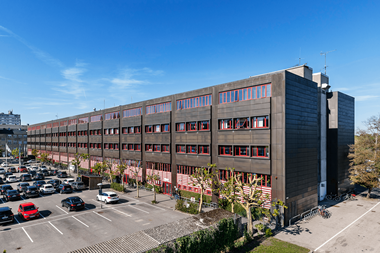Danish pensions giant ATP is considering greater exposure to property that can grant it stable, long-term income in the wake of recent changes to its liability structure, according to its chief executive.
In May, ATP invested DKK3.2bn (€429m) in Belgium, buying a large office property in Brussels already let long-term to the Belgian Ministry of Finance.
Carsten Stendevad, chief executive of the DKK641bn pension fund, told IPE: “In the last year, we’ve made a number of significant real estate investments, and the investment in Belgium, which has a very long lease at inflation-adjusted rents, fits perfectly into our strategy.”
Asked if the pension fund would target similar deals in the future, he said: “Yes, if the price is right.
“The concern is that we are not the only ones in the world looking for stable, fixed-yield assets,” he added. “But the good news is we don’t have a pressing need to buy them, because we already have them in our investment portfolio and can use them to hedge the long-dated liabilities.”
In mid-August, ATP announced it was making a change to the structure of the yield guarantees it offers members of its statutory supplementary labour-market pension scheme.
From next year — and only for members who are 50 years or older — the new yield guarantees offered will only be for 15 years, rather than for life, as is currently the case.
The change allows ATP to avail itself of a greater number of fixed income hedging investments and instruments to back the guarantees — a flexibility that could lead to higher returns and lower financial costs, given the low level of liquidity at the long end of bond market.
The recent move followed a change the pension fund made in October 2013 when it implemented a new discount yield curve to value its pension liabilities, which had the effect of reducing its interest-rate sensitivity by 25% — therefore boosting its investment flexibility by the same percentage.
Stendevad explained that by changing the discount yield curve, ATP now has a rate of 3% to achieve on its long-term pensions liabilities over 40 years.
The rate compared favourably to one of around 4.2% for pension funds using the Danish FSA’s discount yield curve, which incorporates the Ultimate Forward Rate (UFR) — a synthetic rate based on long-term growth and inflation expectations — for liabilities of more than 20 years’ duration.
In practice, it meant ATP now only needed to use fixed-income investments to cover 75% of its liabilities, as opposed to 100% before the change, Stendevad said.
The remaining 25% can be covered with investments in real assets such as property and infrastructure, he said.
Stendevad pointed out that while the shortening of the yield guarantees to 15 years did increase investment freedom, the change only related to future contributions, and the new flexibility was limited to fixed income investment within the hedging portfolio.
ATP divides its assets into a DKK540bn portfolio of fixed income investments and instruments designed to match its guaranteed pensions, and a DKK101bn investment portfolio which simply aims for high returns.
“We still have to be at the very far end of the curve, and we will still be providing some guarantees of 40 years,” he said.
“So the new product will move us further in on the yield curve, but we will still be a very large player at the long end of the curve.”
However, the change to the discount yield curve made last autumn, however, will continue to allow ATP to broaden its investment in real assets, he said.














